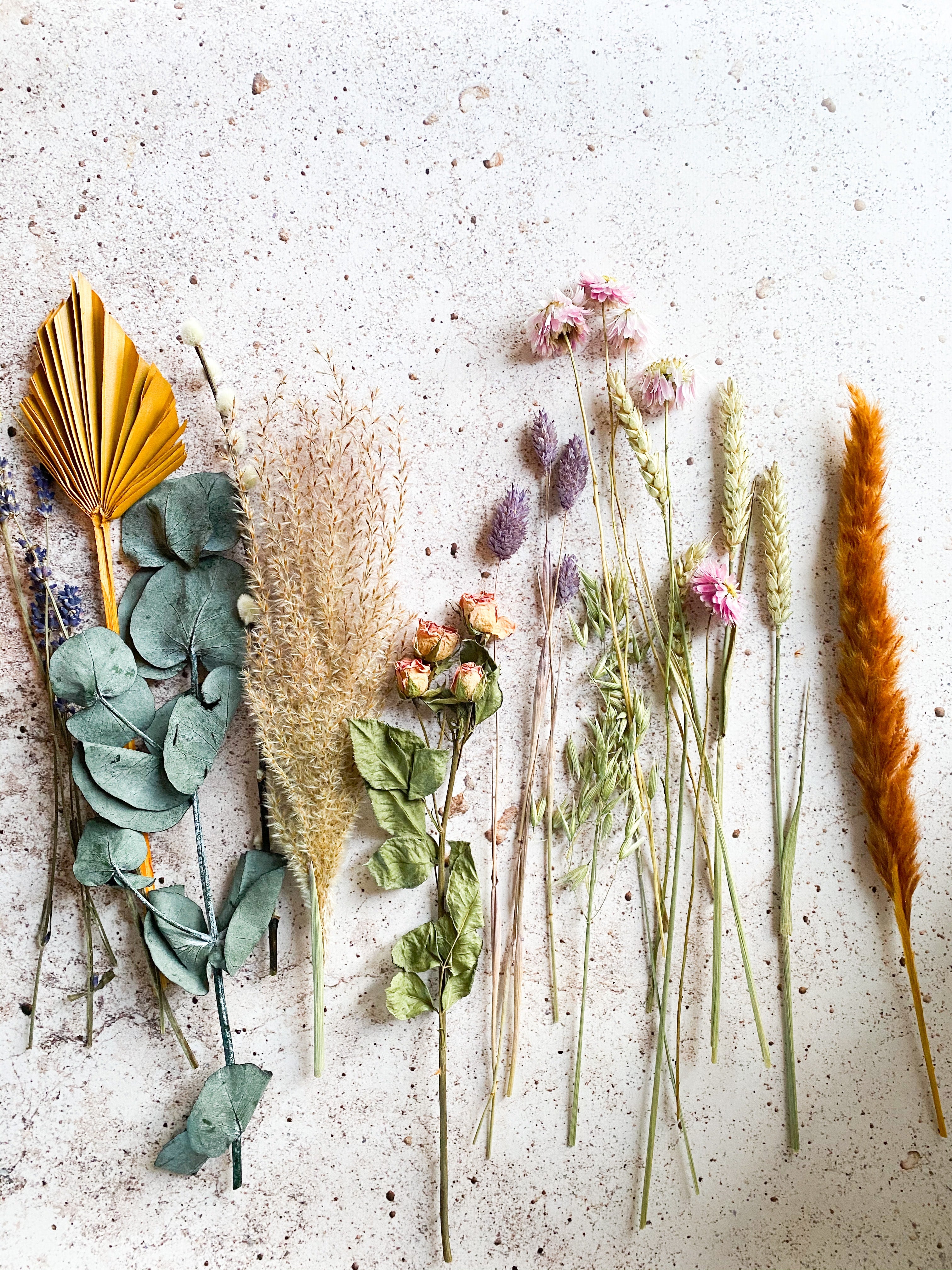A Guide to Drying Flowers
Drying flowers allows you to enjoy them year-round. When summer comes to an end, hold on to your flowers for a while longer by drying them out. Display them in vases or bottles as you would with a fresh bouquet. Drying flowers is a simple process and can be used with a variety of flowers that are probably already in your garden! Summer is the best time for drying flowers, the air is warm and many of your favourite flowers are looking blooming lovely!
Although drying flowers is becoming on-trend, the process dates back to Ancient Egypt. Typical uses nowadays include;
- Centrepieces
- Potpourri and aroma sachets
- Arts and crafts like scrapbooking and card making
- Culinary purposes
- Decoration
Flowers and foliage perfect for drying
Flowers:
- Roses
- hydrangea
- lavender
- statice
- larkspur
- salvia
- celosia
- baby’s breath
Foliage:
- Palm leaves
- Ornamental grasses
- Herbs like oregano
- Toi Toi
Flowers and foliage can be dried by hanging them upside down in a dry and warm location for several weeks. Attics, hot water cupboards or dark garages all make great locations for drying.
How to Dry Flowers
- Cut flowers when they’re about to bloom or are in the early bloom stage
- Remove foliage from your flower stems
- Group your flowers or foliage together in small bunches and tie tightly with twist ties, cable ties or rubber bands. Wrapping tightly ensures that even when the stems shrink, the flowers won’t fall out of their bunches
- Hang upside down in a warm, preferably dark spot until thoroughly dried, this should take about 2 – 3 weeks.
Hydrangeas can also be dried by placing them in a vase with a small amount of water – enough to cover an inch of the stem. As the water is consumed, the flower will begin to gradually dry.

















